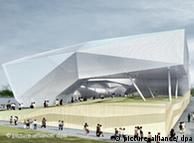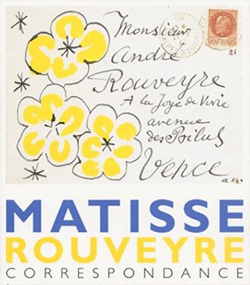Post-Minimal to the Max
Published: February 10, 2010
TO paraphrase Jerry Lee Lewis, there is a whole lot of art making going on right now. All different kinds. But you’d hardly know it from the contemporary art that New York’s major museums have been serving up lately, and particularly this season.
The current exhibition of Gabriel Orozco at the Museum of Modern Art along with the recent ones of Roni Horn at the Whitney Museum and of Urs Fischer at the New Museum have generated a lot of comment pro and con. So has the Tino Sehgal performance exhibition now on view in an otherwise emptied-out Guggenheim rotunda. But regardless of what you think about these artists individually, their shows share a visual austerity and coolness of temperature that are dispiritingly one-note. After encountering so many bare walls and open spaces, after examining so many amalgams of photography, altered objects, seductive materials and Conceptual puzzles awaiting deciphering, I started to feel as if it were all part of a big-box chain featuring only one brand.
The goal in organizing museum exhibitions, as in collecting, running a gallery and — to cite the most obvious example — being an artist, should be individuation and difference, finding a voice of your own. Instead we’re getting example after example of squeaky-clean, well-made, intellectually decorous takes on that unruly early ’70s mix of Conceptual, Process, Performance, installation and language-based art that is most associated with the label Post-Minimalism. Either that or we’re getting exhibitions of the movement’s most revered founding fathers: since 2005, for example, the Whitney has mounted exhibitions of Robert Smithson, Lawrence Weiner, Gordon Matta-Clark and Dan Graham. I liked these shows, but that’s not the point. We cannot live by the de-materialization — or the slick re-materialization — of the art object alone.
After 40 years in which we’ve come to understand that dominant styles like Abstract Expressionism, Minimalism and Pop are at best gross simplifications of their periods, it often feels as though an agreed-upon master narrative is back in place.
What’s missing is art that seems made by one person out of intense personal necessity, often by hand. A lot but not all of this kind of work is painting, which seems to be becoming the art medium that dare not speak its name where museums are concerned.
Why hasn’t there been a major New York show of Philip Taaffe, whose layered, richly colored paintings are actually taking the medium of painting in a direction it hasn’t been before? Why has a retrospective of the painter Chris Ofili — with his volatile mix of color, pattern, popular culture and identity politics — opened at the Tate Britain but not yet been scheduled for a New York museum? And why not see what a survey of the work of an artist as endlessly varied and yet dauntingly consistent as Joe Zucker — a veteran of the Post-Minimalist outfield — might look like? If the public can handle an empty museum as art, it can deal with some paintings made of cotton balls. I, for one, would rather see a tightly organized overview of Mr. Zucker’s work than Marlene Dumas’s warmed-over Expressionism, which was recently displayed in bulk at the Museum of Modern Art.
How did we get to this point? In the 1970’s the Whitney used to be committed to showing artists from across the United States; they were called regional artists in those days. That term has thankfully fallen out of fashion, but the artists have all but disappeared from museum walls. The Modern, for its part, used to present several works each by 10 to 15 artists under the rubric of its “Americans” show.
But a combination of forces threatens to herd all of our major art institutions into the same aesthetic pen. The need to raise and make money sends curators hunting for artists with international star power who work big at least some of the time, deploy multiple entertaining mediums and make for good ad campaigns (like the self-portrait featured in the MoMA ads for its coming exhibition of William Kentridge). The small show devoted to an artist who doesn’t have an immense reputation and worldwide market becomes rarer and rarer.
The consistent exposure to the big-statement solo exhibition becomes self-perpetuating, as these shows condition not only curators but the public to expect more of the same. I realize to my horror, for example, that the idea of seeing a survey of contemporary painting at the Modern makes me squirm. It would look — I don’t know — too messy and emotional, too flat, too un-MoMA.
The New Museum is a notable exception to all this. Compared with other museums in town, it deserves credit for trying to sum up recent trends outside latter-day Post-Minimalism. “Unmonumental,” its inaugural exhibition in its new building, explored recent developments in collage and assemblage, while “After Nature” plunged into a range of mediums in pursuit of a humanistic theme. Both shows sprawled to the point of incoherence but were still ambitious attempts to account for swaths of contemporary art.
The Guggenheim doesn’t play it as safe as the Modern or the Whitney. With its Sehgal show, as with its “Theanyspacewhatever” exhibition in 2008, it acts like a place where anything can happen. But shows where we encounter an artist’s single-minded, highly personal pursuit that proceeds one object at a time tend to feature past masters. The Guggenheim’s recent, fantastic Kandinsky exhibition was an example (as was the Modern’s Ensor show). Yet there are plenty of artists working this way now. They may not be making history (or entertainment, either), but they are still making really good art whose very unfolding has its own integrity and is exciting to see.
I wouldn’t have a problem with these shows of the gods and godlings of Post-Minimalism if they were balanced and mixed with other stuff that is completely different. But that other stuff is largely missing in New York museums, though there is plenty of it around.
It is amazing that some aspect of Laura Owens’s or Dana Schutz’s work is not thought worth some kind of small, well-organized museum show. The same goes for Lari Pittman, who could sustain something larger. European artists, who bring a little more wit and accessibility to Post-Minimalism, include Rosemarie Trockel and Fischli & Weiss. Someone should do a show of the early paintings of Peter Doig.
And there is more demolition work to be done on the master narratives of the recent past. It would be interesting to see how the eccentric California painter Roy De Forest holds up, what with the several returns of representation and of painting since he emerged. Similarly, the midcentury West Coast painter David Park — more than Richard Diebenkorn — could do with another New York retrospective. He’s the kind of artist who can light a fire under a young artist and also teach the public a great deal about looking at painting, a skill we seem to be in danger of losing.
The paintings of John Wesley, an elder statesman of alternative Pop Art, were seen in quantity at the Venice Biennale; he had a retrospective at P.S. 1 in 2000 but has never had a show of any size in a Manhattan museum. Other deserving painters who emerged in the 1940s and 1950s, often working small and usually beyond the pale of Abstract Expressionism, include Alice Trumbull Mason, Beauford Delaney, Steve Wheeler, Loren MacIver and Lois Dodd — who, by the way, is still making art.
You’d never know from looking at museums that figurative painting, running the gamut from realist to quasi-expressionist, is on the rise. (Speaking of which, if some New York curator didn’t see Nicole Eisenman’s recent show at Leo Koenig and at least consider doing a show, we are in trouble.) Some kind of local museum attention could be given to the realist painter Rackstraw Downes, the abstract painters Thomas Nozkowski, Larry Poons and Stanley Whitney, or to an artist like Dona Nelson, who refuses to commit to either camp and whose eccentricities are a good match for Joe Zucker’s. These painters seem slated to become the forgotten artists of the future. David Bates is having a perfectly interesting career without any attention from the New York art establishment, thank you very much.
New York missed out on a recent retrospective of the cantankerous political surrealist Peter Saul. A survey of the work of the painter Jim Nutt — our era’s crazed answer to the Northern Renaissance — being organized by the Museum of Contemporary Art in Chicago, does not yet have a New York stop. And it has finally been determined that the long overdue survey of the abstract ceramicist Ken Price that has been undertaken by the Los Angeles County Museum of Art will come to the Metropolitan Museum. I’m glad it will be seen here, but the fact that the Guggenheim, the Whitney and the Modern could not fit it into their schedules shows an appalling narrowness of vision. I don’t care how many scheduling conflicts can be cited.
If this sounds harsh, let me also say that I think curators of contemporary art in New York museums have some of the toughest jobs in the art world. They rarely seem able to act on their own without some kind of committee oversight and are under unbelievable pressure to succeed at the box office. Museum gallery space is at a premium and is almost uniformly unforgiving. Excepting the idiosyncratic flexibility of the Guggenheim’s ramp, there is barely a decent gallery among our main museums, although we seem to have stopped talking about the effect this has on curators, their exhibitions and thus on the seeing and comprehending of art.
New York museum curators also have to compete with New York galleries, which are out there discovering new and overlooked artists and — increasingly — mounting invaluable historical shows. At the same time the amount of inspiration and information curators can gain from galleries is unparalleled. However, gathering it requires spending more time seeing shows beyond the six or eight galleries whose artists get most of the big museum shows these days. The idea that a moment’s most visible artists are concentrated in a handful of powerful galleries is only superficially true. By now we know too much not to willfully work against this notion.
Museum curators need to think less about an artist’s career, its breakthroughs and its place in the big picture and more in terms of an artist’s life’s work pursued over time with increasing concentration and singularity.
They have a responsibility to their public and to history to be more ecumenical, to do things that seem to come from left field. They owe it to the public to present a balanced menu that involves painting as well as video and photography and sculpture. They need to think outside the hive-mind, both distancing themselves from their personal feelings to consider what’s being wrongly omitted and tapping into their own subjectivity to show us what they really love.
These things should be understood by now: The present is diverse beyond knowing, history is never completely on anyone’s side, and what we ignore today will be excavated later and held against us the way we hold previous oversights against past generations.
Message to curators: Whatever you’re doing right now, do something else next.






![[Picture] Aircruise concept](http://www.seymourpowell.com/aircruise/img/aircruise_bridge.jpg)